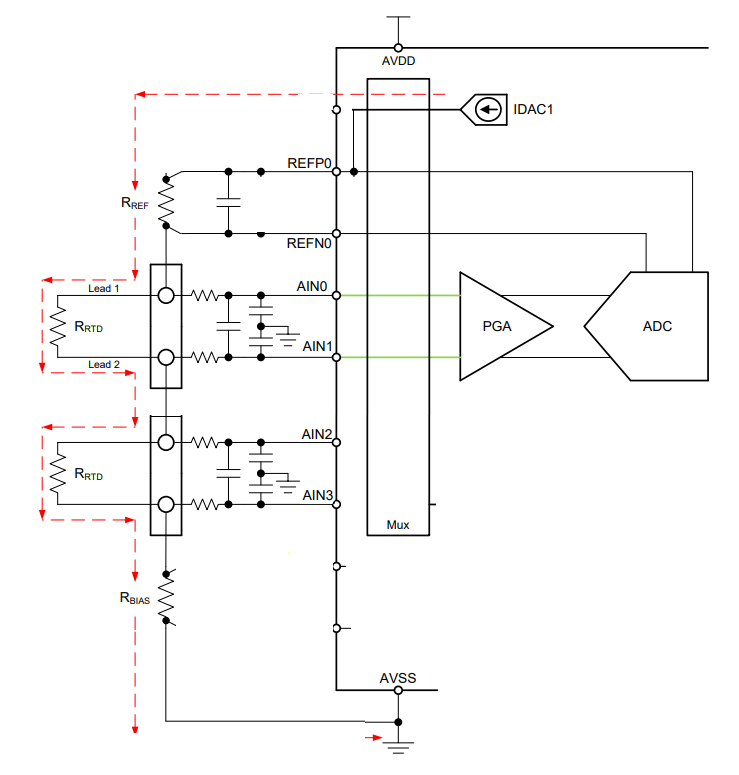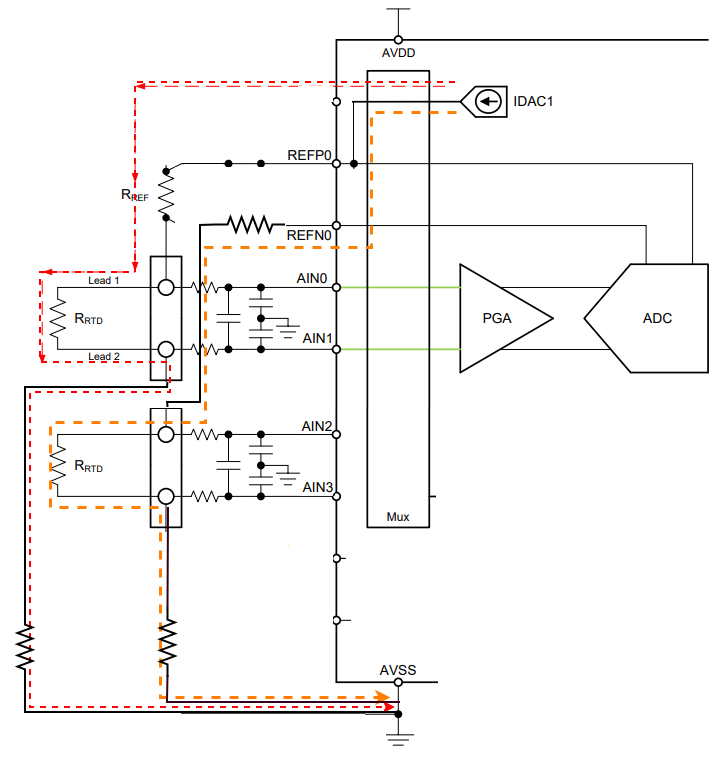Other Parts Discussed in Thread: ADS114S06
Hi all,
My question is regarding the ADS1120 part and two RTD wiring in two wires mode.
This part have Two Differential or Four Single-Ended Inputs inputs (AIN0 .. AIN3).
Is it possible to use it as described in "A Basic Guide to RTD Measurement" §2.7 (the following picture). I mean, can I send the current provided by one of the IDAC to AIN0 output and make a differential measurement between AIN0 & AIN1 for the first RTD and a second measurement between AIN2 & AIN3 for the 2nd RTD.
Thank you,
Best Regards,
Paul.




